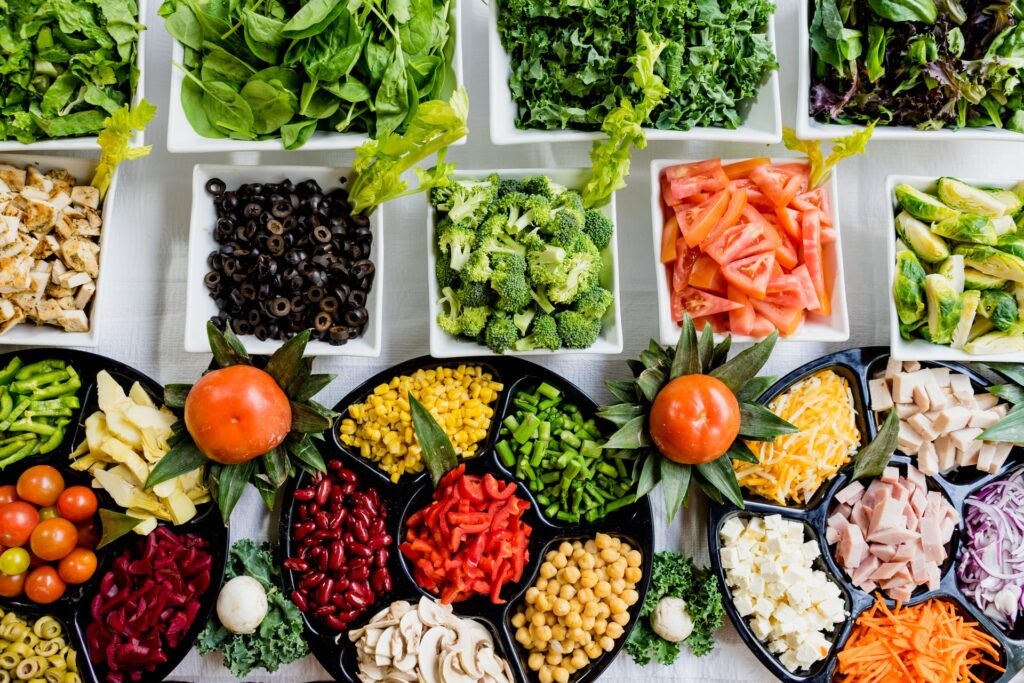For the body to be healthy, certain nutrition and guidelines must be met. Eating patterns influence how the body functions and it is important that one sticks to healthy eating guidelines as otherwise health might be compromised. A balanced diet is important to maintain good health.
Healthy eating guidelines
Following guidelines should be adhered to if one aims to develop healthy eating patterns:
- Have at least 5 portions of vegetables and fruits (vegetables can be eaten with full meals, while fruit might be consumed as snacks) a day to provide essential micronutrients for your body
- Meals should be based on foods high in starch and fibre, such as rice, grains, potatoes, bread and pasta (especially wholemeal)
- At least one portion of dairy or dairy alternative should be included for calcium
- Consume at least one portion of high protein foods a day. Such foods could include lean meat, fish, eggs, beans, lentils, quinoa etc.
- Prefer unsaturated fats such as olive oil as it has anti-inflammatory properties and contains healthy fats that can help maintain healthy cholesterol levels and blood pressure (1,2)
- Drink a lot of fluids, preferably water, at least 6-8 glasses a day
While choosing the foods it should be noted that the meals should be varied to deliver a variety of nutrients to the body. Any snacks high in saturated (especially hydrogenated) fats and sugars (especially refined) should be consumed in small quantities. When talking about a portion of vegetables or fruits, it could be considered as 80g of fresh fruit or vegetables, 30g of dried fruits or vegetables or 150ml glasses of smoothie of fruit juice.
Starchy foods should make up around a third of everything one consumes. Wholemeal or wholegrain versions are preferred over standard ones as they contain more fibre and vitamins. When eating potatoes, the skin could also be consumed as it is a source of vitamins and fibre as well.
Dairy products are a good source of protein and calcium. Calcium is a micronutrient necessary for the maintenance of healthy bones and teeth. Calcium-fortified soy drinks can serve as an alternative.
Legumes, fish, eggs, meat and other high protein product are necessary for tissue creation and recovery. Meats contain vitamin B12, iron (especially in red meat) and zinc, while eggs and fish contain healthy fatty acids (omega-3). One should aim to eat at least 2 portions of fish a week. Legumes are low in fat, and high in fibre, vitamins, minerals and protein, while nuts also contain vitamins, minerals and protein, but in contrast, are high in fats.
Oils containing large amounts of unsaturated fats can help maintain healthy cholesterol levels but are high in energy, so should not be consumed as may lead to obesity.
Saturated fats (especially hydrogenated), refined sugars and large amounts of salt are considered unhealthy as too much sodium in the diet can increase blood pressure (which increases the risk of stroke), while processed high fat and high sugar snacks are very calorie-dense, can cause obesity and tooth decay.
References:
- Gimeno, E. et. al., (2002) Effect of ingestion of virgin olive oil on human low-density lipoprotein composition, available at: https://www.nature.com/articles/1601293
- Massaro, Marika et. al. (2020), Effects of Olive Oil on Blood Pressure: Epidemiological, Clinical, and Mechanistic Evidence, available at: https://www.ncbi.nlm.nih.gov/pmc/articles/PMC7352724/




